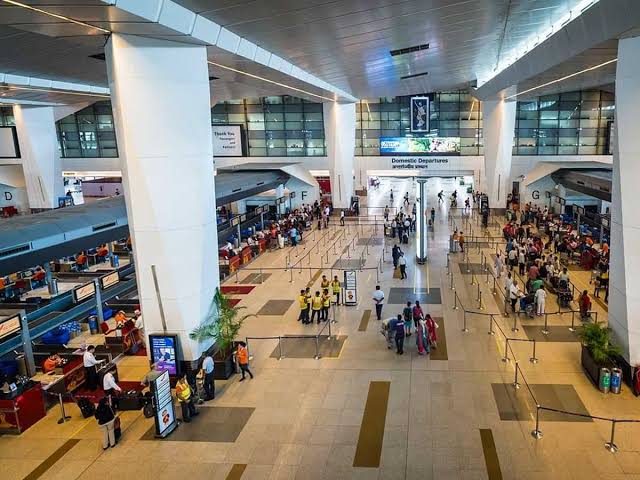By 2028, Indira Gandhi International Airport in Delhi will make history by launching India’s first air train, transforming passenger movement within the expansive airport complex. Imagine this: as planes taxi along the airport’s elevated taxiway, a sleek air train will smoothly glide beneath, efficiently transporting passengers between terminals.
This ambitious project, led by Delhi International Airport Ltd (DIAL) and supported by the GMR Group, is set to revolutionize airport transit. The 7.7-kilometre Automated People Mover (APM) will connect the main terminals — Terminal 1 and Terminals 2/3 — without requiring an expensive underground section. To keep costs manageable, DIAL has opted for an elevated route, with 75% of the line running above ground and the remainder at surface level, as reported by The Times of India.
A unique aspect of this project is its integration into the airport’s dynamic ecosystem. The APM will operate directly beneath the elevated taxiway, allowing it to merge seamlessly with the movement of vehicles and aircraft, a first for India. The route will include key stops at Aerocity and Cargo City, enabling quick and convenient transfers between terminals.
Also Read- SpiceJet Cancels Flight 5 Minutes Before Boarding, Triggers Outrage and Protests at Delhi Airport
Cost-Effective Yet Cutting-Edge
To prevent escalating costs, DIAL chose an elevated design, which is significantly cheaper than underground alternatives. Building underground could have raised expenses to Rs 500-600 crore per kilometre, compared to Rs 250-300 crore for elevated sections. Consequently, the total project cost is estimated at around Rs 1,500-1,600 crore, making this a strategic yet cost-efficient choice.
Despite the high costs, the Union Aviation Ministry, during the Modi 2.0 administration, instructed DIAL not to pass these expenses directly onto passengers. Instead, the airport operator must complete the project before recouping costs through alternative means, such as revenue-sharing from advertising along the route, targeting the millions of high-spending travellers passing through Delhi’s airport each year.
Global Standards, Local Innovation
Similar to air trains found in international airports, Delhi’s APM will be free for passengers, designed for seamless and rapid transfers between terminals. The initial route will feature four stops: Terminal 2/3, Terminal 1, Aerocity, and Cargo City. Although government directives initially reduced the number of stations from six to four, there is potential for future expansion with additional stops planned at Aerocity.
According to the tender document, the APM will be developed under a design, build, finance, operate, and transfer (DBFOT) model. This state-of-the-art system aims to significantly enhance passenger convenience, improve Delhi Airport’s Airport Service Quality score, and contribute to sustainability efforts by reducing the airport’s carbon footprint.
As the air train swiftly glides below aircraft preparing for take-off, passengers can look forward to faster transfers, shorter wait times, and an overall improved travel experience.


